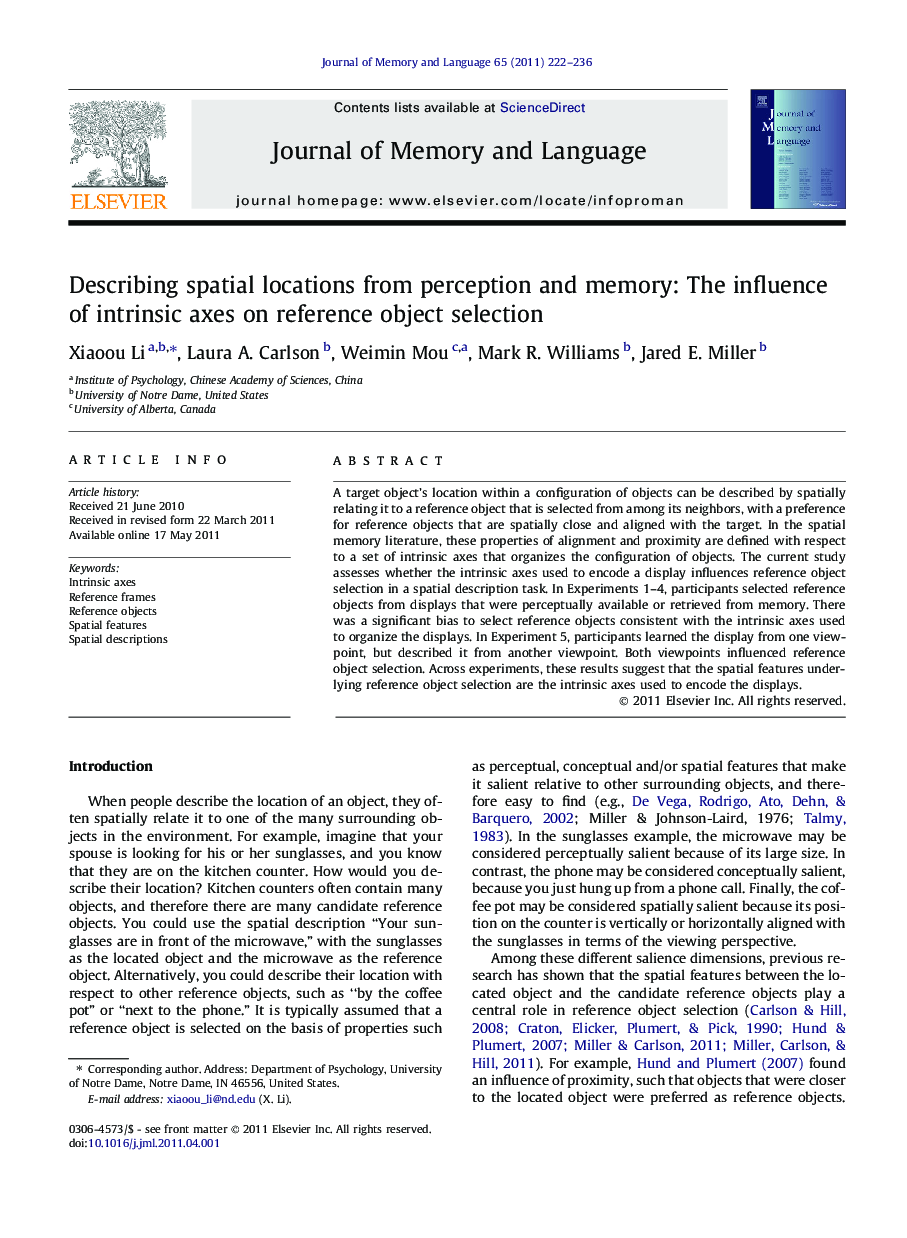| Article ID | Journal | Published Year | Pages | File Type |
|---|---|---|---|---|
| 932123 | Journal of Memory and Language | 2011 | 15 Pages |
A target object’s location within a configuration of objects can be described by spatially relating it to a reference object that is selected from among its neighbors, with a preference for reference objects that are spatially close and aligned with the target. In the spatial memory literature, these properties of alignment and proximity are defined with respect to a set of intrinsic axes that organizes the configuration of objects. The current study assesses whether the intrinsic axes used to encode a display influences reference object selection in a spatial description task. In Experiments 1–4, participants selected reference objects from displays that were perceptually available or retrieved from memory. There was a significant bias to select reference objects consistent with the intrinsic axes used to organize the displays. In Experiment 5, participants learned the display from one viewpoint, but described it from another viewpoint. Both viewpoints influenced reference object selection. Across experiments, these results suggest that the spatial features underlying reference object selection are the intrinsic axes used to encode the displays.
► We assess the link between intrinsic axes and selecting reference objects. ► When reference objects were perceptually available or retrieved from memory, they were more selected along intrinsic axes. ► Both viewpoints from which participants learned the display and described it influenced reference object selection. ► The spatial features underlying reference object selection are the intrinsic axes used to encode the displays.
